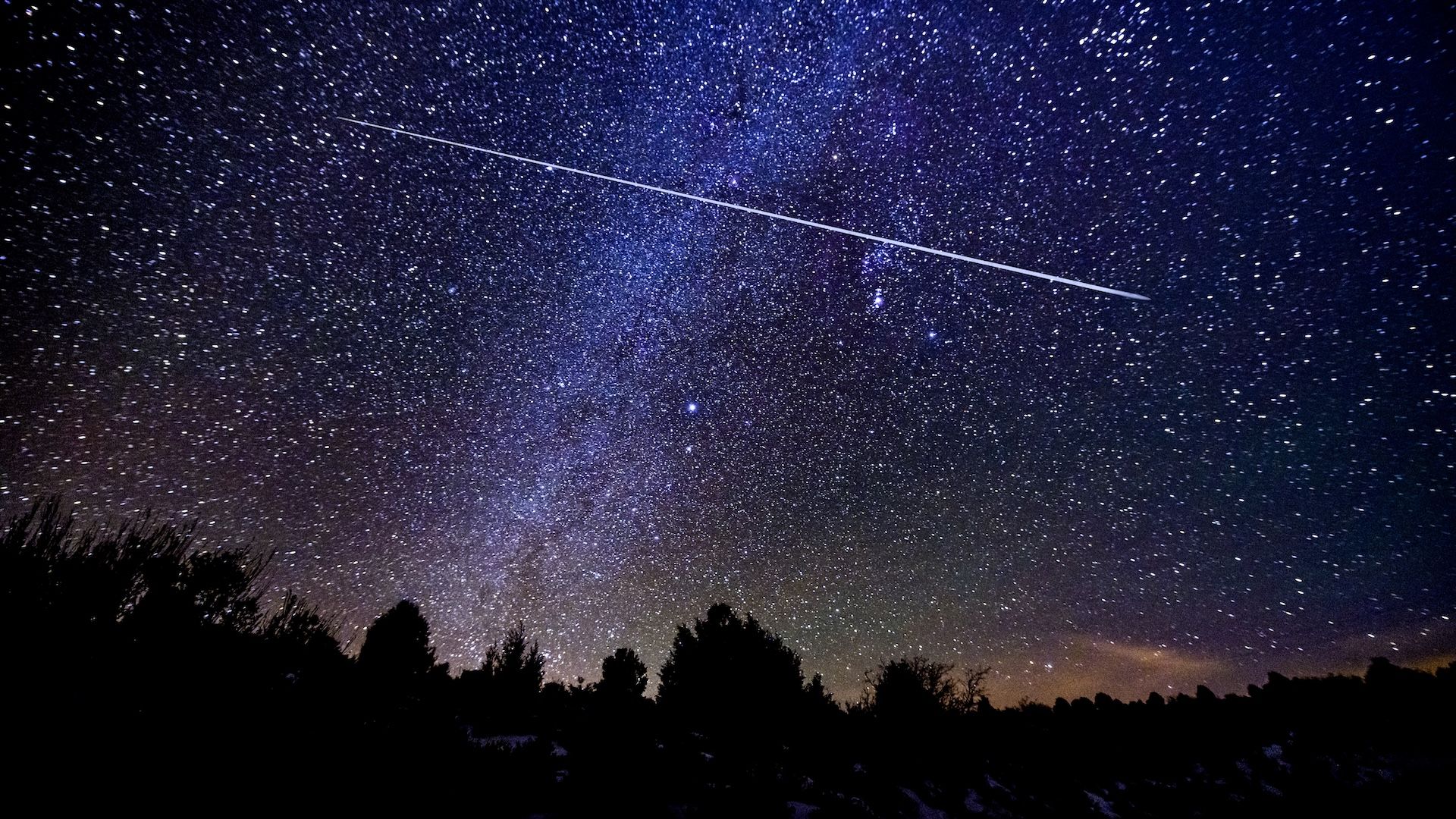The Draconid meteor shower is set to begin on the same night as the supermoon, coinciding with the activation of two other meteor showers.
The meteor shower is expected to start on Monday, Oct. 6, according to NASA. The shower will only occur for a few days before it ends on Friday, Oct. 10.
“The Draconid meteor shower comes from debris trailing the comet 21P Giacobini-Zinner burning up in Earth’s atmosphere,” NASA’s Jet Propulsion Laboratory stated in a YouTube video titled “What’s Up: October 2025 Skywatching Tips from NASA.“
The meteor shower is set to peak on the night of Wednesday, Oct. 8, but the light from the full moon, which peaks Monday night, could hinder stargazers’ view of the Meteor shower.
What happens when a meteor shower peaks?
Usually, during a shower’s peak, more meteors, also known as shooting stars, will be visible.
However, during the full moon, the moon’s light is so bright that it can interfere with the viewing experience. This month’s moon is extra special because it will be a supermoon, meaning it will be around 30% brighter and up to 14% larger than normal, according to NASA.
Don’t fret, though. The Orionids meteor shower, which began on Sept. 26, will peak around the time of the new moon on Tuesday, Oct. 21, according to NASA’s Jet Propulsion Laboratory. At its peak, stargazers can spot around 20 meteors an hour streaking across the night sky.
More meteor showers in 2025
Some of the meteor showers that have already happened this year are Quadrantids (started in 2024 but peaked in January 2025), Lyrids, Eta Aquariids, and the Alpha Capricornids and Southern Delta Aquariids, according to the American Meteor Society website.

The Geminid meteor shower lights up the night sky above Tybee Island, Ga., early Thursday, Dec. 14, 2017.
The American Meteor Society also states that there are several more happening this year, which, according to NASA and the Society, include the following:
-
Orionids– Thursday, Sept. 26 to Wednesday, Nov. 22; peaks the night of Wednesday, Oct. 22 into the morning of Thursday, Oct. 23. The moon will be 2% full.
-
Southern Taurids– Monday, Oct. 13 to Thursday, Nov. 27; peaks on the night of Monday, Nov. 3 into the morning of Tuesday, Nov. 4. The moon will be 96% full.
-
Northern Taurids– Monday, Oct. 13 to Monday, Dec. 1; peaks the night of Saturday, Nov. 8 into the morning of Sunday, Nov. 9. The moon will be 83% full.
-
Leonids– Monday, Nov. 3 to Tuesday, Dec. 2; peaks the night of Sunday, Nov. 16 into the morning of Monday, Nov. 17. On this night, the moon will be 9% full.
-
Geminids– Monday, Dec. 1 to Thursday, Dec. 21; peaks on the night of Thursday, Nov. 13 to the morning of Friday, Nov. 14. The moon will be 30% full.
-
Ursids– Tuesday, Dec. 16 to Friday, Dec. 26; Peaks on the night of Sunday, Dec. 21 to the morning of Monday, Dec. 22. The moon will be 3% full.
The Quadrantids will also begin in 2025 on Friday, Dec. 26, but the shower will not peak until Saturday, Jan. 3, 2026, when the moon will be 100% full.
Which meteor showers will be the easiest to view this year?
Depending on the weather and cloud coverage, the showers that occur closer to the new moon will receive less interference from the moon’s light, making them easier to see, Robert Lunsford, the American Meteor Society’s newsletter editor and fireball report coordinator, previously told USA TODAY.
Of the six meteor showers that will reach their peak in 2025, the Orionids, Leonids and Ursids will have the least amount of interference from the moon and possibly offer better views.
Do you need any equipment to see the Draconid meteor shower?
No, onlookers will not need any equipment to see the meteor shower. In fact, you don’t even need a telescope or binoculars, according to NASA.
A telescope can limit your view of the night sky. You want to ensure you have a clear view of the entire night sky, especially since multiple showers are occurring simultaneously, and a falling star can come from any direction.
If you do decide to try to watch the Draconid meteor shower, make sure you do the following:
-
Check the weather and cloud coverage in your area to make sure conditions are optimal to view the meteor shower
-
Find a dark location away from light pollution
-
Give your eyes 20 to 30 minutes to adjust to the dark
-
Avoid looking at phones or bright lights
To be as comfortable as possible, dress appropriately for the weather, use bug spray, and bring a blanket, sleeping bag or a reclining chair to lie down on.
Julia is a Trending reporter for USA TODAY and covers scientific studies and trending news. Connect with her on LinkedIn, X, Instagram, and TikTok: @juliamariegz, or email her at jgomez@gannett.com
This article originally appeared on USA TODAY: When is the 2025 Draconid meteor shower? Here’s what to know.


